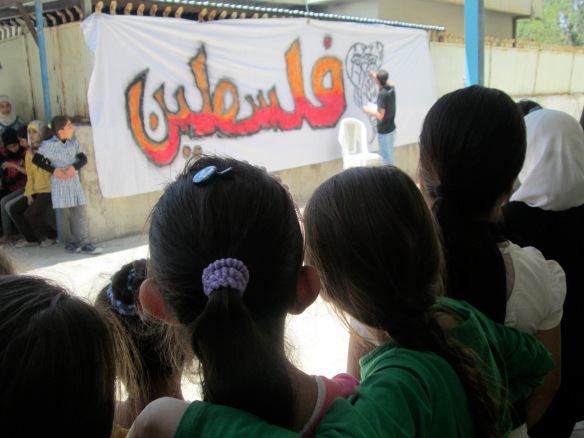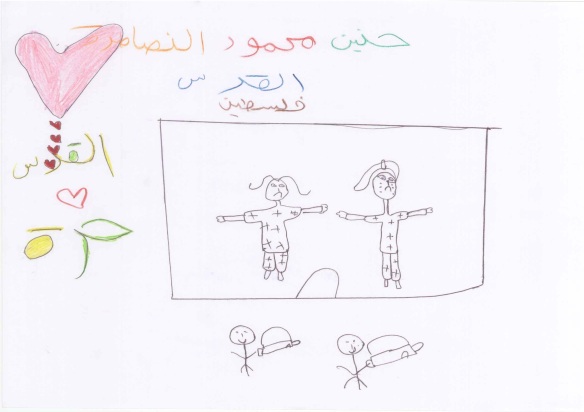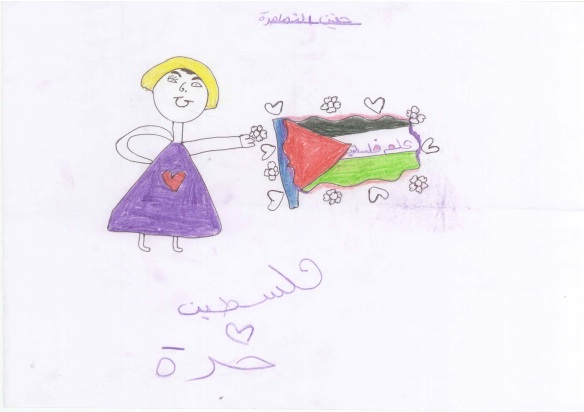Just over a month ago, on May 15, the Arab world observed “the Nakba.” This day is a rememberance of the 1948 war, the creation of Israel, and the exodus of Palestinian refugees who fled their homes. The Nakba means “the catastrophe” in Arabic.
Around the same time, a former Fulbrighter approached me with a project for her grad program at Georgetown. She is designing a curriculum for Washington, DC students that teaches history and current events using the stories of refugees. Would Baqaa’s youth have anything to contribute?
So Marah and I designed a program. As part of the Nakba rememberance, we asked students to write or draw about Palestine — to give us a depiction or a narrative that would help American students understand Palestine better. “What does Palestine mean to you? What does being Palestinian mean to you?” we asked them; then we let them present whatever they wanted to present.
Haneen and Bayan watch as volunteer teacher Khalid makes a banner (reads “Palestine” in Arabic) – for the Nakba rememberance at the Center
I want to share these drawings and writings with you all. First of all, because the students did a really great job. The artwork is beautiful; the narratives are compelling. I am eager to share their voices. But second of all, because I think its important and relevant to see how deeply these students love Palestine and how much they want to go back.
The students in Baqa’a camp are all refugees from Palestine – but they were born in Jordan and they are Jordanian citizens. It was their grandparents, or perhaps their parents as young children – who fled Palestine during the 1948 and 1967 wars. Yet their families have grown up in this refugee camp-turned-town, dreaming of going home.
I think I understand the Palestinian cause a lot… but even I was surprised at the depth of these writings and the sadness of these drawings. Sometimes its hard for me, like many other Americans, to understand the Palestinian’s insistence on the “right to return.” Its hard to grasp the deep connection to land — because I’ve never had a home taken from me – never had to live in a place I felt I didn’t belong – never felt I’ve been wronged with no apology or recognition.
The project made me sad a lot. The kids are so young to have these images and thoughts in their minds. But no matter how many times I told them, “irsmeelee ishy 7elu 3n filistin .. draw me something beautiful about Palestine,” students kept drawing sad pictures. Halfway through the program I had the words dababa, qatilu, and yehud (tanks, killing, Israelis) memorized.
So to start: two drawings from Haneen, an 8 year old girl.
She proudly showed me her picture, which broke my heart, then complied to my request to draw something beautiful and happy about Palestine.
“Miss, these are the Palestinians killed in their homes”
Translation: Haneen – Palestine – Jerusaleum <3 Freedom
Translation: Palestinian Flag – Palestine <3 Free



